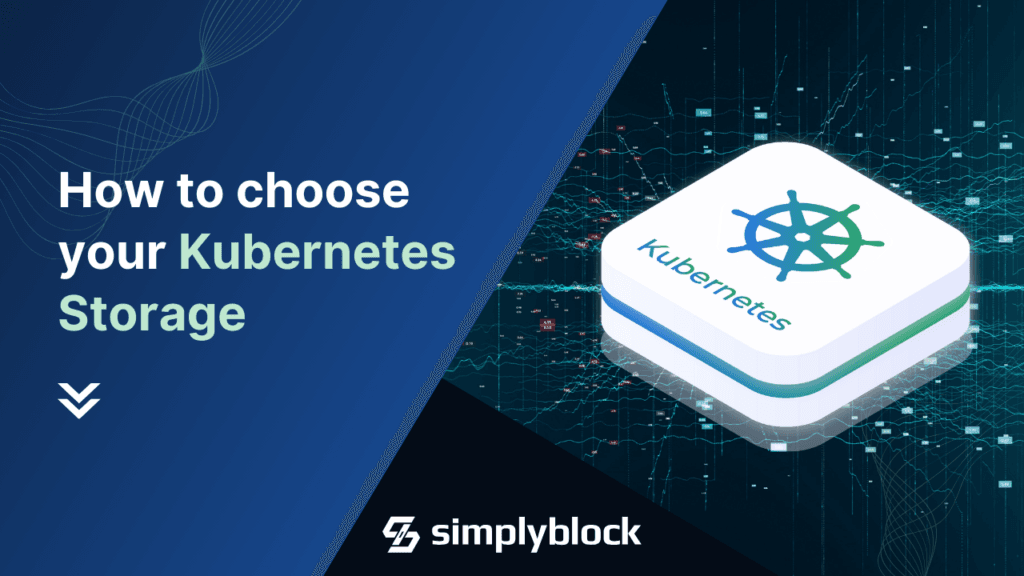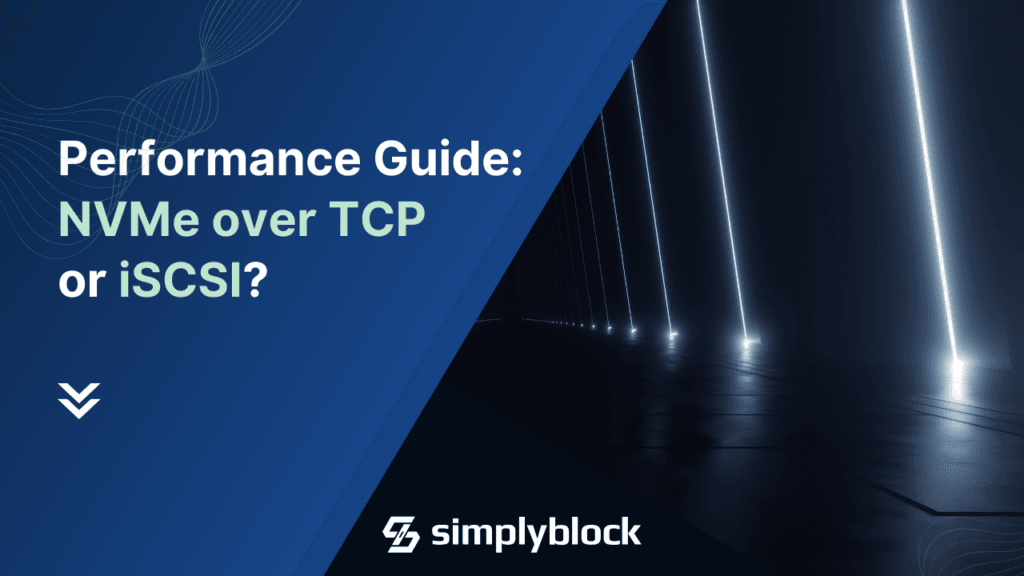
CubeFS is a cloud-native, open-source distributed storage system designed for large-scale data workloads. It supports multiple access protocols, including S3, HDFS, and POSIX, and offers features like multi-tenancy, multi-AZ deployment, and cross-regional replication.
While CubeFS is suitable for various scenarios such as big data, AI, and container platforms, organizations seeking enhanced performance, scalability, and integration with modern infrastructures are exploring competitor solutions.
Simplyblock Positioned Against CubeFS for Modern Infrastructure
Simplyblock delivers a cutting-edge software-defined storage platform tailored for high-performance workloads. Its modular, adaptive, unified, shared-everything (MAUS) architecture supports NVMe over Fabrics (NVMe-oF), Kubernetes-native deployments, and seamless scalability across diverse environments. Designed to meet the demands of modern enterprises, simplyblock offers a robust alternative to traditional SDS solutions like CubeFS.
Key Advantages of Simplyblock
- Linear Scale-Out Performance: Expand storage capacity without compromising performance.
- Advanced Erasure Coding: Enhanced data protection with efficient storage utilization.
- High IOPS Density: Optimized for demanding workloads requiring rapid data access.
- Support for ARM64 and x64: Flexibility to deploy across various hardware platforms.
- DPU Optimization: Offload storage tasks to Data Processing Units for improved efficiency.
- End-to-End NVMe-oF Support: Ensure low-latency, high-throughput storage networking.
- Application-Transparent Storage Tiering: Automatically move data between storage tiers without application awareness.
Why Simplyblock Surpasses CubeFS
- Modern Architecture: Unlike CubeFS’s traditional systems, simplyblock offers a cloud-native, software-defined approach.
- Enhanced Flexibility: Deploy across various environments without vendor lock-in.
- Optimized Performance: Leverage NVMe-oF and DPU technologies for superior throughput and latency.
- Simplified Management: Streamline operations with Kubernetes-native integration and automated tiering.
Strongest Open-Source Competitors to CubeFS
CubeFS isn’t the only choice when it comes to distributed file systems. Strong competitors to CubeFS exist in the open-source and closed-source world. Platforms like Ceph, GlusterFS, Portworx, and Longhorn offer reliable performance, scalability, and data resilience.
Ceph
Ceph is an open-source storage platform that provides object, block, and file storage in a unified system. It’s designed for scalability and high availability, making it suitable for large-scale deployments. Ceph’s self-healing and self-managing capabilities reduce administrative overhead.
GlusterFS
GlusterFS is an open-source, scalable, and highly available storage platform. It’s designed for cloud environments and handles large amounts of unstructured data, making it suitable for big data analytics and media streaming.
Portworx
Portworx by Pure Storage is a Kubernetes-native storage platform designed for mission-critical applications. It offers features like high availability, data security, backup and recovery, and multi-cloud operations, making it suitable for large-scale enterprise deployments.
Longhorn
Longhorn is an open-source, cloud-native block storage solution developed by Rancher Labs. It offers lightweight, easy-to-deploy storage for Kubernetes clusters, supporting features like incremental snapshots and backups. Longhorn is ideal for small to medium-sized deployments requiring simple, reliable storage.
Feature Comparison of Simplyblock, CubeFS, and Key Competitors
This feature comparison provides a side-by-side look at Simplyblock, CubeFS, and the most prominent competitors in the market. Find out which platform offers the best value for your data storage and management needs.
| Feature | Simplyblock | CubeFS | Ceph | GlusterFS | Portworx | Longhorn |
|---|---|---|---|---|---|---|
| Linear Scale-Out Performance | ✅ | ✅ | ✅ | ❌ | ✅ | ✅ |
| Advanced (Distributed) Erasure Coding | ✅ | ❌ | ❌ | ❌ | ❌ | ❌ |
| High IOPS Density | ✅ | ❌ | ❌ | ❌ | ❌ | ❌ |
| Supports ARM64 and x64 | ✅ | ❌ | ✅ | ❌ | ❌ | ✅ |
| DPU Optimized | ✅ | ❌ | ❌ | ❌ | ❌ | ❌ |
| End-to-End NVMe-oF Support | ✅ | ❌ | ❌ | ❌ | ❌ | ❌ |
| Application-Transparent Storage Tiering | ✅ | ❌ | ❌ | ❌ | ❌ | ❌ |
Making a Smarter Choice for Distributed File Systems
As enterprises navigate the complexities of modern workloads, choosing a storage solution that offers flexibility, scalability, and performance is crucial. While CubeFS has served many organizations well, alternatives like simplyblock provide the advanced features necessary for today’s dynamic environments.
Why Simplyblock is the Preferred Choice
Simplyblock combines the benefits of software-defined storage with cutting-edge technologies, ensuring your infrastructure is ready for current and future demands. Its emphasis on flexibility, efficiency, and integration positions it as a superior choice for organizations seeking to optimize their storage strategy.
Questions and Answers
CubeFS is primarily a distributed file system supporting multiple protocols (S3, HDFS, POSIX). Simplyblock, as a specialized Software-Defined Storage (SDS) platform, focuses on high-performance block storage, leveraging technologies like NVMe. This block-centric focus gives Simplyblock the high IOPS density needed for modern applications, making it a powerful alternative to CubeFS.
Platforms like Portworx and Longhorn are specifically designed to be Kubernetes-native, offering seamless integration and policy-based management. Simplyblock takes this further by combining that essential Kubernetes-native ease of use with high-performance NVMe-oF technology, giving it a significant advantage in speed and efficiency for Kubernetes storage.
These features are key performance differentiators. End-to-End NVMe-oF ensures low-latency, high-throughput networking, while DPU Optimization offloads storage processing tasks. Since CubeFS lacks support for both, competitors utilizing this technology, like Simplyblock, achieve significantly higher IOPS Density and lower latency.
Both are open-source and scalable. GlusterFS is highly flexible for unstructured data, but lacks the high-performance features of modern block storage. The main trade-off is often complexity vs. dedicated performance and support, which commercial platforms are designed to address for large-scale production, simplifying tasks like optimizing Kubernetes costs.
Advanced Erasure Coding provides robust data protection with far less capacity overhead compared to the full replication methods often used in distributed storage systems like CubeFS. This efficient approach drastically lowers the total capacity required. Simplyblock leverages this feature to provide enterprise-grade fault tolerance and superior cost management in a software-defined storage environment.



